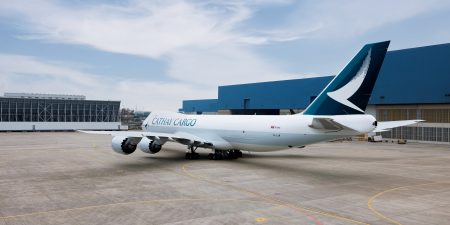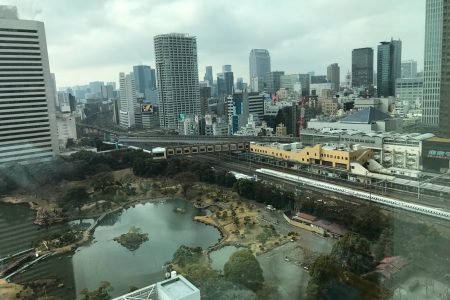It’s appropriate that Cathay Cargo’s Tokyo offices are located in Shiodome. First, it’s a modern development close to upmarket Ginza so there is a premium brand parallel. Second and more significantly, it’s built on the site of a former rail-freight terminal, so cargo is very much in the building’s DNA.
From an airy open-plan office overlooking a tangle of rail and monorail lines, skyscrapers and an imperial garden, Cargo Manager Japan Shuichi Ueba oversees the commercial and operational sides of Cathay Pacific’s cargo business in Japan. He manages 14 Cathay Pacific people in this office, 62 in total across the country.
‘There are commercial teams in Tokyo, Osaka, Nagoya and Fukuoka, with operational staff based at Narita, Kansai/Osaka (KIX) and Nagoya,’ he says. ‘At the rest of the ports, we manage ground handling agents (GHAs). Narita is the only self-handling port, the rest of the ports are basically handled by GHAs. Our people’s job is to manage how the GHAs work and ensure the safety, security and quality of our service.’
It’s a complex undertaking. There are six Cathay Pacific freighters a week from Narita and four from KIX – with an additional six Air Hongkong freighters from each port, and a further five from Nagoya. In terms of passenger flights for the summer season, there are 152 services to Hong Kong from all the airports served by the Cathay Pacific Group. ‘It’s growing all the time; it’s hard to keep up,’ says Ueba-san.
The two major ports dominate the cargo market though. ‘In terms of port breakdown, 85 per cent of our cargo goes from two ports – I would say 55 per cent from Tokyo, 30 per cent from KIX,’ he says. ‘The other 15 per cent comes from the remaining ports, such as Nagoya, Fukuoka and Sapporo.’



